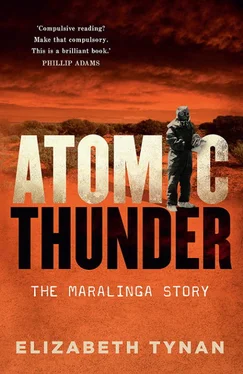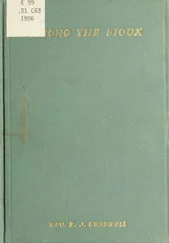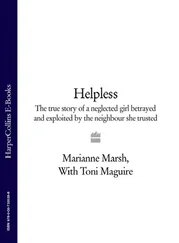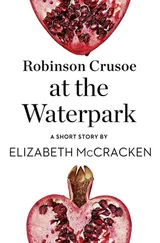The bomb dropped on Hiroshima was a crude nuclear weapon, codenamed Little Boy, based upon uranium-235 and using a technique known as gun technology that quickly became obsolete. It involved driving a cylinder of uranium-235 into the centre of another cylinder of the same substance with a hole in it. The bomb dropped on Nagasaki was nicknamed Fat Man and operated quite differently using plutonium. The basic idea of Fat Man (and indeed of the gadget) was to jam two half-spheres of plutonium together by detonating high explosives in a small space, initiating a chain reaction in which neutrons split the atoms and released energy. Fat Man was superior to Little Boy in design but had some drawbacks. In particular the weight of the conventional explosive needed to initiate the reaction made the bomb much bigger than Little Boy – hence ‘Fat Man’ – which presented logistical difficulties. The aircraft that dropped the Hiroshima bomb, Enola Gay , could not drop Fat Man. Instead, a specially modified B-29 called Bockscar was used for the task.
Some Manhattan scientists, notably the American Ernest Lawrence, argued for an eye-opening but non-lethal ‘demonstration’ of the weapon to the Japanese, rather than using it on human targets. The idea was dismissed. Washington agreed with the Scientific Advisory Committee: the shock value would be lost if the weapon was not used for real. Arguments about the ethics of that decision continue today.
In the final months leading up to the Trinity test, Winston Churchill wanted to ensure that the collaboration would continue after the war ended. Now that the idea of a fission bomb was becoming reality, with crucial input from both sides of the Atlantic, such a collaboration seemed both likely and desirable. The Hyde Park Agreement struck between Churchill and Roosevelt on 19 September 1944 said in part, ‘Full collaboration between the United States and the British Government in developing tube alloys for military and commercial purposes should continue after the defeat of Japan unless and until terminated by joint agreement’. In fact, soon after the defeat of Japan, the Americans changed their minds.
After Hiroshima and Nagasaki, the world collectively took a deep breath. Atomic bomb research stopped abruptly, and bomb-making expertise dispersed for a short time as the Manhattan Project scientists and technologists went back to where they came from. While Little Boy and Fat Man had worked as they were designed to do, they were not well-developed bombs, and nuclear weapons needed more research, testing and refinement. But for a moment, everyone involved stopped to take stock, while the shock waves from the war in general, and the atomic weapons in particular, ebbed away. What had been wrought was so world-changing that for a while those involved did not know what to do. The genie was out of the bottle. During this time, both the UK and the US held talks with the United Nations (established in October 1945) to try to formulate a way that nuclear weaponry and energy could be harnessed without sparking an unstoppable nuclear arms race. The talks were unsuccessful and an arms race soon began.
The US gathered its thoughts on the existential issue of nuclear warfare and pondered the consequences of rapid atomic weapons development. One of its first postwar actions was to drive its atomic weapons allies away. The McMahon Act (known officially in the US as the Atomic Energy Act) was the result of this period of postwar reflection. This new American law, which banned collaboration on nuclear weapons development, took Britain by surprise and created a range of problems that the nation had not seen coming. Indeed, Britain saw the McMahon Act as a betrayal by the Americans, after Britain had handed over so much expertise during the war. Suspicions arose that the McMahon Act was a commercial decision, attempting to corner a lucrative new market in weaponry and energy. British know-how, combined with that of British-based European refugees who had escaped from the Nazis, made the atomic bomb possible. Suddenly Britain was elbowed out of the nuclear game. The country was displeased and wrong-footed.
The catalyst for this sudden and brutal excision of British science from the US atomic weapons program went by the name of the atomic spy Alan Nunn May. His name is inextricably linked with the events that later unfolded in Australia because in a sense he caused them to happen. British physics contributed most of the important atomic spies, although the US had its own too, including the prodigy Ted Hall, and the husband and wife Julius and Ethel Rosenberg, who were both executed for espionage. Nunn May was the first atomic spy to be revealed. His exposure further hurt an already fractious UK–US partnership on weapons development and set it back many years.
Alan Nunn May was a physicist, one of the young intellectuals at Cambridge in the 1930s tempted then seduced by the communists. He was briefly a contemporary of Donald Maclean, one of the renowned Cambridge spies and part of the Philby, Burgess, Maclean and Blunt circle, possibly Britain’s most famous and romanticised spies. Nunn May graduated from Cambridge with an honours degree in physics then went to King’s College in London to study for his doctorate and teach. While lecturing at King’s, he joined a Communist Party group.
The balding, moustachioed and rather nondescript-looking Nunn May was not a particularly rabid or passionate party member. In fact, he had allowed his party membership to lapse by the time World War II began, when he was working on a secret British project to develop radar (incidentally, one of the other great technological feats achieved in the heat of war). In 1942, soon after the possibilities of splitting the uranium atom became known, Nunn May joined a team of Cambridge scientists who, as part of the Manhattan Project, were examining the technicalities of building an atomic reactor.
At that stage, Canada was becoming an important partner in the secret project to build an atom bomb. Canada mined some of the uranium ore (the rest came mostly from the Congo) and also extracted the uranium-235 and manufactured the plutonium needed to build the bombs. A vast technological effort was required to deliver the materials required. A fateful decision was made to transfer Nunn May to Montreal, where a Soviet spy ring was becoming active. The British physicist, already sympathetic to the communist cause, was recruited there by Soviet military intelligence.
As the Manhattan Project approached its final goal of a workable bomb, aspects of the massive scientific and technological push were being wound back. In July 1945, just weeks before the bomb was dropped on Hiroshima, Nunn May told his Soviet handler that he was about to go home. Moscow wanted to maximise its return on an asset. What could Nunn May give them that would make a lasting contribution? On 9 July 1945, the British physicist passed small amounts of enriched uranium (that is, uranium with a high proportion of the isotope uranium-235) to his handler. He later provided technical details of the bomb dropped on Hiroshima. In return, he received US$200 and a bottle of whiskey. He was never in it for the money, as he made clear at the end of his long life (he died in 2003 aged 91). He was a physicist who believed that knowledge should be shared, and that the secrecy around atomic weapons development was anathema to science.
Shortly after the war ended, Igor Gouzenko, a lieutenant in the Soviet military intelligence agency and cipher clerk at the Soviet Embassy in Ottawa, defected with documents that contained extensive details about Soviet agents, including Dr Nunn May. By then, Nunn May had returned to Britain, where he was arrested and put on trial. The day before his 35th birthday, in May 1946, he was sentenced to 10 years in prison. He was released in 1952, after serving just over six years. When Nunn May died in 2003, the New York Times quoted him as saying in old age, ‘The whole affair was extremely painful to me, and I only embarked on it because I felt this was a contribution I could make to the safety of mankind. I certainly did not do it for gain’. The idea of the greater good was a common thread through much atomic espionage.
Читать дальше












